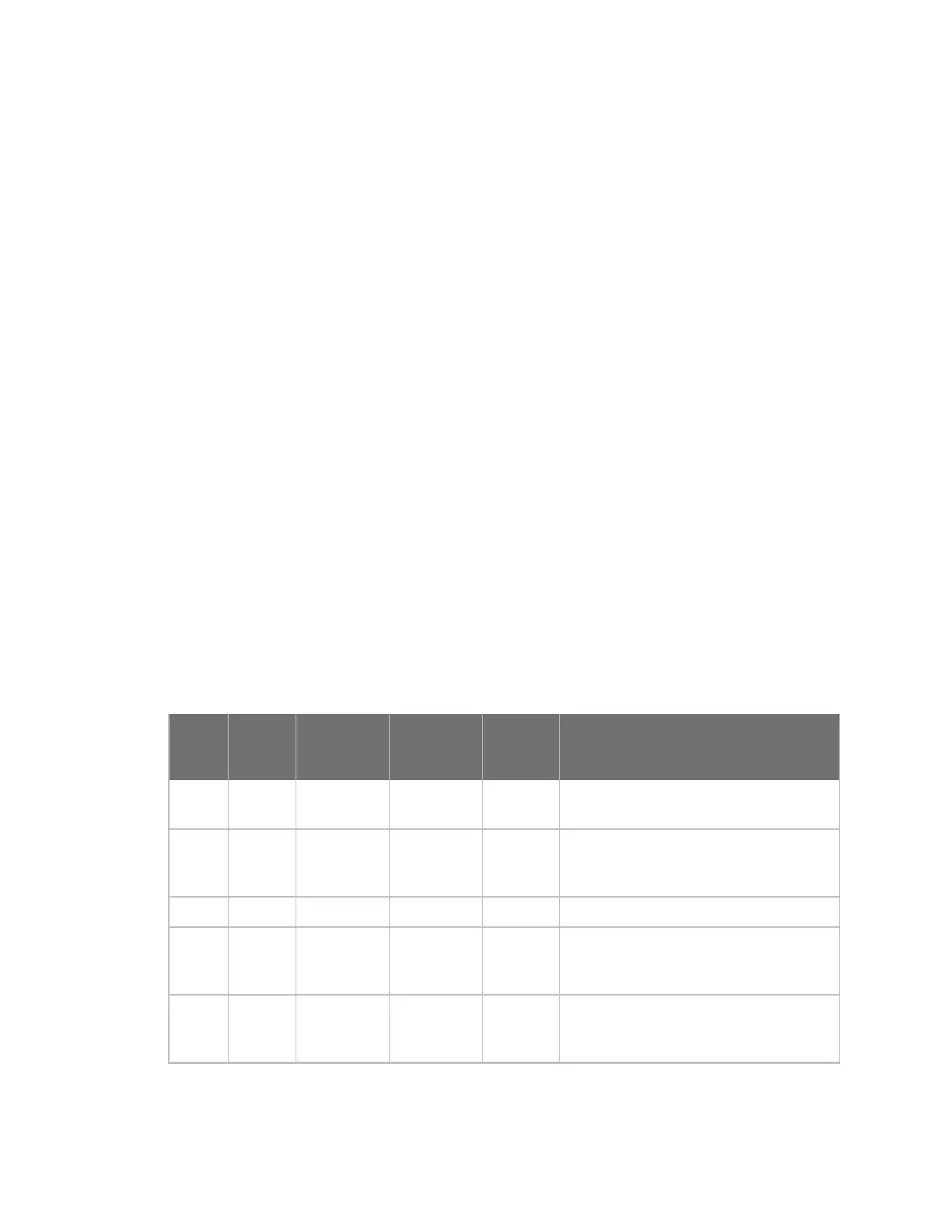I/O support Legacy support
Digi XBee3® 802.15.4 RF Module User Guide
42
Legacy support
By default, the XBee3 802.15.4 RF Module is configured to operate in a legacy configuration. This
provides network and application compatibility withXBee S1 802.15.4andXBee S2C
802.15.4devices.Use AO command to determine which outgoing API frames are emitted and what
I/O lines are used for sampling.
On the source node,AOaffects:
n Which Digital I/O lines are sampled
n What sample frame type is used for outgoing transmissions
On the destination node,AOaffects:
n How incoming XBee3 sample frames are interpreted and what API frames are emitted
Previous 802.15.4 firmwares on the XBee S1 and XBee S2C hardware had a limited set of I/O lines
available. Valid DIO lines on these devices are fromD0throughD8; I/O samples are transmitted over
the air using a standard I/O sample packet Legacy data format. These platforms do not have
anAOcommand and always output sample data in a legacy format if possible.
For the XBee3 platform, digital I/O has been enhanced to be in parity with DigiMesh and Zigbee. You
can now enable up to fourteen digital inputs for sampling:D0throughP4as long asAOis not set to 2.
In order to support these additional I/O lines, an enhanced I/O sample packet is sent over the air,
which is not compatible with the S1 or S2C.
By default, the XBee3 802.15.4 RF Module is configured to operate in a legacy configuration
withAOset to 2. This allows you to sampleD0throughD8. Ifyou configure D9throughP4 as digital
I/O, they are not sampled unlessyou set AOto 0 or 1.
For new designs, we recommend settingAOto 0 or 1 (Operate in API mode), which allows you to use
additional I/O lines for sampling and easily allows you to switch to Zigbee or DigiMesh, as the API and
I/O functionality are identical.
This table illustrates the various configuration combinations that are possible and the expected
output:
Source
Source
AO
value Destination
Destination
AO value
Data
format API frame on receiver
XBee3 0 or 1 XBee3 0 or 1 Enhanced I/O Data Sample Rx Indicator frame -
0x92
XBee3 0 or 1 XBee3 2 Legacy RX (Receive) Packet: 64-bit address IO
frame - 0x82 / RX Packet: 16-bit address
I/O frame - 0x83
XBee3 0 or 1 S1 or S2C N/A N/A N/A
XBee3 2 XBee3 0 or 1 Legacy RX (Receive) Packet: 64-bit address IO
frame - 0x82 / RX Packet: 16-bit address
I/O frame - 0x83
XBee3 2 S1 or S2C N/A Legacy RX (Receive) Packet: 64-bit address IO
frame - 0x82 / RX Packet: 16-bit address
I/O frame - 0x83

